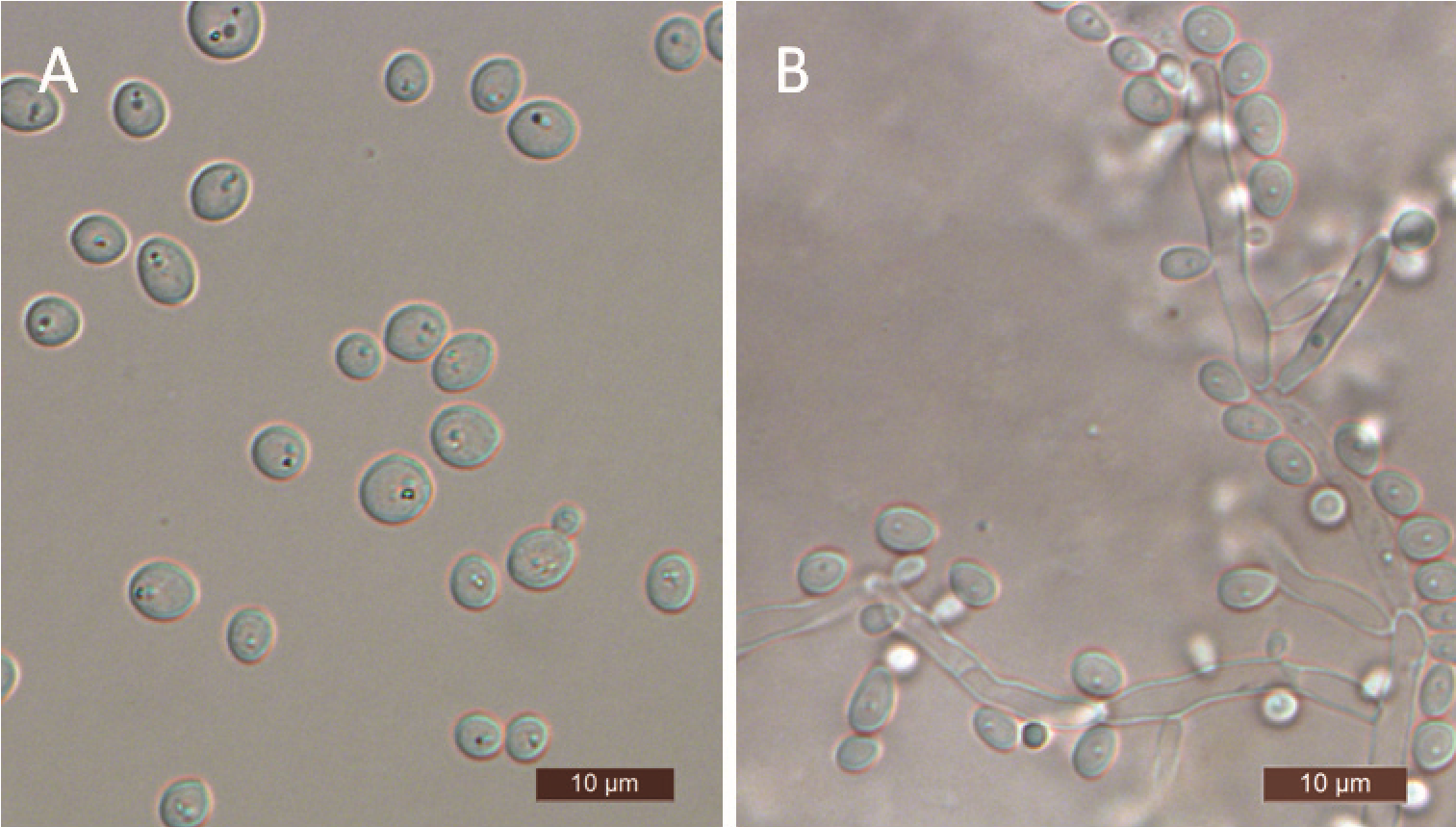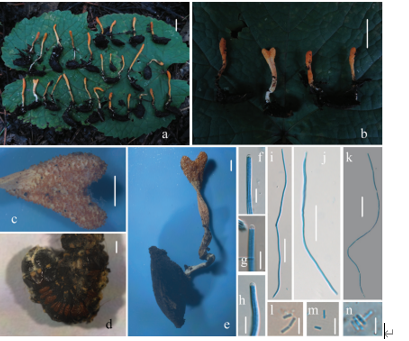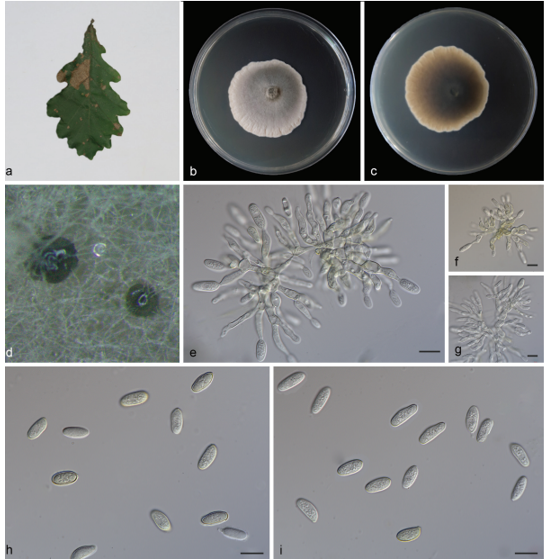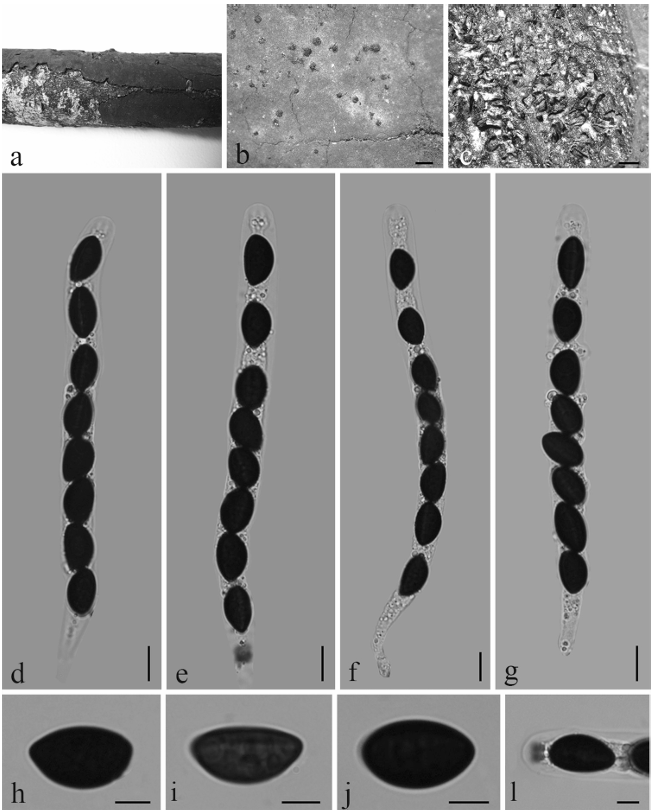Scheffersomyces anoplophorae C.Y. Chai & F.L. Hui, sp. nov. 2020
MycoBank No: 835006
Holotype: China, Henan Province, Nanyang, in the gut of Anoplophora leechi, in the People’s Park, July 2015, R.C. Ren & K.F. Liu (ex-holotype: CICC 33086; CBS 14170).
Morphological description
The cells are spherical or ovoid (2.5–6 × 2.5–7.5 μm) and occur singly or in pairs (Fig. 4A) when placed in YM broth after 3 days at 25 °C. Budding is multilateral. After 3 days of growth on YM agar at 25 °C, the colonies are white to cream-colored, buttery, and smooth with entire margins. After 12 days at 25 °C on a Dalmau plate culture with CM agar, pseudohyphae were observed but true hyphae were not (Fig. 4B). Asci or signs of conjugation were not observed on sporulation media. Glucose, galactose, trehalose, cellobiose (weak), and d-xylose (weak) are fermented, but maltose, sucrose, melibiose, lactose, melezitose, raffinose, and inulin are not. Glucose, galactose, d-glucosamine, d-xylose, maltose, trehalose, cellobiose, salicin, glycerol, ribitol, d-glucitol, d-mannitol, d-glucono-1, 5-lactone, 2-keto-d-gluconate, 5-keto-d-gluconate, succinate, citrate, and ethanol are all assimilated. No growth was observed in l-sorbose, d-ribose, l-arabinose, d-arabinose, l-rhamnose, sucrose, methyl α-d-glucoside, arbutin, melibiose, lactose, raffinose, melezitose, inulin, erythritol, xylitol, l-arabinitol, galactitol, myo-inositol, d-gluconate, d-glucuronate, dl-lactate, or methanol. For the assimilation of nitrogen compounds, growth on l-lysine, glucosamine, or d-tryptophan is positive, while growth on nitrate, nitrite, ethylamine, cadaverine, creatine, creatinine, and imidazole is negative. Growth is observed at 37 °C, but not at 40 °C. Growth in the presence of 0.01% cycloheximide is positive, but growth in the presence of 0.1% cycloheximide, 10% NaCl with 5% glucose, and 1% acetic acid is negative. Starch-like compounds are not produced. Urease activity and diazonium blue B reactions are also negative.
Habitat: in the gut of Anoplophora leechi, in the People’s Park
Distribution: China
GenBank Accession: ITS: KU128714,MT133542; nrLSU D1/D2: KU128724, MT133540
Notes: Two strains, representing S. anoplophorae, were clustered in a well-supported clade and were phylogenetically related to S. stambukii (Lopes et al. 2018). The nucleotide differences between the new species and its closest relative, S. stambukii, were 2.3% substitutions in the D1/D2 domain and 6.6% substitutions in the ITS region, respectively. Physiologically, the ability to assimilate d-glucosamine and the inability to assimilate d-gluconate are the primary differences between S. anoplophorae and its closest relative, S. stambukii. Additionally, S. stambukii can grow in 5% glucose medium with 10% NaCl, while S. anoplophorae cannot.
Reference: Jia R-R, Lv S-L, Chai C-Y et al. (2020) Three new Scheffersomyces species associated with insects and rotting wood in China.
Morphology of S. anoplophorae. A budding cells B pseudohyphae. Scale bars: 10 μm.









